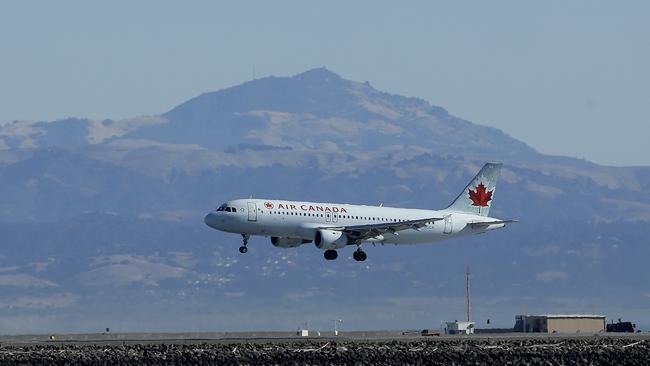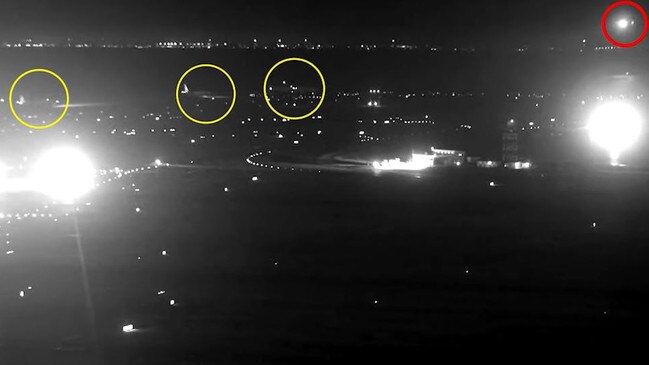Taxiway collisions emerge as biggest threat to US air travelers
Scared of flying? It’s what goes on while the plane is on the tarmac that’s really worrying.

US air-crash investigators are slated to examine an escalating hazard for airline passengers: planes mistakenly lining up to land on airport taxiways, rather than runways, or actually touching down on them in error.
A spate of close calls on the tarmac has prompted the National Transportation Safety Board to highlight the dangers. The highest-profile incident took place in July 2017, when an Air Canada jet came within dozens of feet of landing on top of four jetliners lined up for departure on a San Francisco taxiway; the planes were filled with hundreds of passengers and many tonnes of fuel.
In the last three years, there have been at least three other especially close calls involving airliners on US taxiways, including mistaken landings at Seattle/Tacoma International Airport and Pullman/Moscow Regional Airport in southeastern Washington state.
“There seems to be a significant number of taxiway events we didn’t use to see,” according to John Marshall, a former safety chief at Delta Air Lines. “Those are horrific types of accidents,” he said.
The incidents tend to occur at night, when pilots are more prone to mistaking taxiway lights for runway lights. Safety experts say the likelihood of such mistakes is greatest when one of two parallel runways is closed to traffic, or normal runway illumination is impaired or temporarily turned off.
According to a congressman briefed on the matter and other people familiar with the details, some of the NTSB’s members and senior staff are leaning toward recommending enhanced cockpit warning systems to guard against more such slip-ups, as well as new technology in air-traffic control towers.
A similar NTSB proposal was rejected by regulators years ago due to airline opposition and cost concerns.
There is renewed talk of implementing airborne use in cockpits of what are called moving map displays, capable of preventing landings on incorrect surfaces by depicting precise locations of nearby aircraft and runways in real time.
A Federal Aviation Administration spokesman acknowledged the moving-map option, but said such systems pose “technological, data-integrity and workload challenges”. FAA regulators are pushing ahead with other potential solutions, from improving existing ground-control radars to modifying traffic-control procedures to hosting a nationwide industry-government safety summit in August to dissect root causes.

Before the end of the month, Congress is expected to pass a multiyear FAA reauthorisation bill including a provision specifically aimed at preventing ground collisions between aircraft. The language, which already has been approved by Senate and House leadership, mandates a report evaluating “the relative benefits and risks” of airborne safety systems “capable of detecting wrong surface alignment” during takeoffs and landings.
The bipartisan legislation also calls on the FAA and NTSB to determine, within six months, “whether it is feasible, cost-effective and appropriate” to install ground-based warning systems providing direct alerts to air-traffic controllers or flight crews.
Scheduled commercial flights in the US have been so safe over the past nine years that from a purely statistical measure, experts consider the greatest remaining accident risks occur when planes are approaching the tarmac, or rolling on the ground.
Reducing so-called runway incursions, when planes blunder onto active runways being used by other aircraft, used to be the highest priority for the FAA. Now, serious incursion events are down to less than one a month nationally, one-quarter of what they were during the early part of the decade.
Pilots confusing taxiways for runways, even though they have distinctly different markings and lights, has become a particularly hot topic since the Air Canada scare.
The safety board is expected to identify fatigue and lax cockpit procedures as major contributors to the near-collision at San Francisco, according to people familiar with the probe and investigative documents the safety board previously posted on its website.
The Air Canada crew, cleared for a visual approach around midnight, failed to use the standard instrument landing system US carriers typically require their pilots to rely on as a backup for precision approaches in similar circumstances.
The co-pilot also told investigators the crew saw suspicious lights on the ground in their path but nevertheless continued the descent, until executing an emergency go-around while flying over the waiting aircraft.
Following the incident, when the Air Canada Airbus A320 captain called the control tower on a telephone. The controller told investigators he spent most of the lengthy conversation trying to calm the distraught aviator.
Air Canada and NTSB spokesmen declined to comment, citing the continuing probe. In November 2017, a Delta Boeing 737 approaching Atlanta in cloudy weather came within roughly 20 metres of touching down on a taxiway. A month later, a turboprop operated by Horizon Air, a unit of Alaska Air Group, mistakenly landed on a taxiway at Pullman, Washington. A Delta spokesman said the carrier revised its pilot training programs. An Alaska spokeswoman declined to comment on safety improvements, but said the Horizon pilots also received additional training.
Representative Mark DeSaulnier, a California Democrat who sits on the House infrastructure and transportation committee, said a taxiway crash in San Francisco “would have been the largest air disaster in decades in the US.” Describing the incident as “a really close call,” he joined other lawmakers in asking congressional investigators to study the issue.
Dow Jones Newswires


